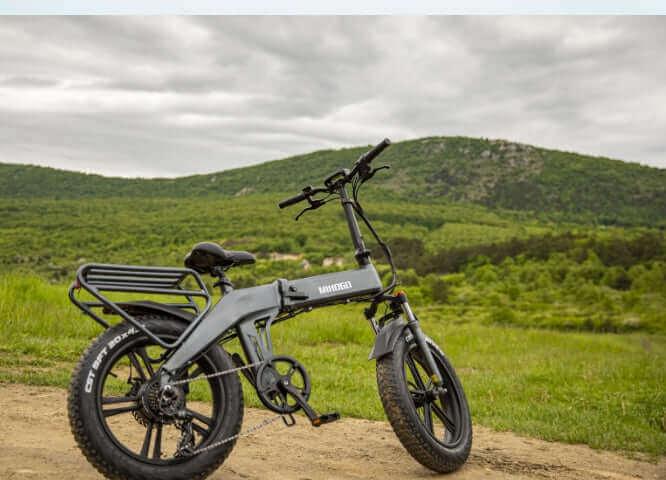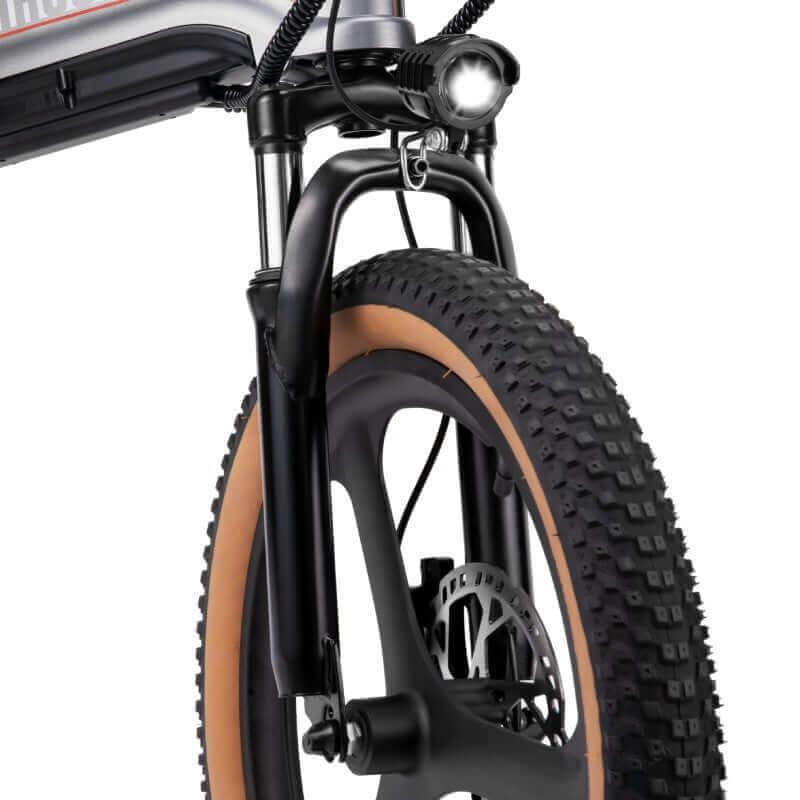Bikepacking, the harmonious blend of unhindered cycling with the idyllic allure of wilderness camping, serves as a gateway to nature's unspoiled grandeur. Each meticulously crafted bikepacking escapade, regardless of your cycling proficiency, promises a distinctly gratifying experience.
This meticulously curated guide is brimming with empirically validated insights and recommendations to render your bikepacking journey an unforgettable one. It covers an array of topics, from preparing for unpredictable meteorological conditions, optimally arranging your bike, selecting essential gear, and beyond. Immerse yourself in this enriching exploration of bikepacking to unearth practical advice for an extraordinary adventure.
Bikepacking, in essence, is an amalgamation of extended-distance cycling and backpacking, where riders are accompanied by their complete gear ensemble. With roots in mountain biking and cycling tours, bikepacking has gradually evolved into a favored means of navigating off-road landscapes and secluded trails. Electric bikes, particularly fat-tire, hunting, or mountain e-bikes, prove to be incredibly beneficial for bikepacking quests.
Understanding the Emergence of Bikepacking
To fully appreciate the evolution of bikepacking, we must delve into the annals of bicycle touring history and the initial cycling enthusiasts.
Historical narratives indicate that the initial cyclists began their journey around 1820. The fascination with bike touring reached a pinnacle in 1869 when a handful of individuals accomplished a 15-hour ride from London to Brighton, followed by a ride from Liverpool to London in a mere three days. The subsequent two decades witnessed an exponential rise in bicycle touring enthusiasm. The year 1896 marked a monumental milestone as John Foster Fraser, accompanied by his two friends, etched their names in history, completing the first global bicycle tour, a two-year expedition covering 19,237 miles and traversing 18 nations.
While the rudimentary days of cycling might seem light-years away from contemporary bikepacking, the essence of exploration and thrill remains inviolable. Be it circumnavigating the globe or simply discovering local unpaved roads, cycling offers an unparalleled perspective on our environment.
The world of bikepacking is ripe with possibilities, irrespective of whether you're prepared for a global tour spanning two years. You can embark on a bikepacking adventure virtually anywhere, with a multitude of exciting bikepacking routes in the U.S. waiting to be explored.
For those seeking a succinct bikepacking adventure, the Delmarva trail, Allegheny Mountains Loop, or Adirondack Park Loop make for perfect choices. However, if you're an adept bikepacker ready for a prolonged challenge, consider taking on the Chicago to New York City trail, Bicycle Route 66, or the Atlantic Coast trail, each exceeding 1,000 miles.
A broad spectrum of trails is accessible for almost any type of bike, from road bikes to singletrack bikes to gravel bikes, and more. Mountain bikes (MTB) and fat tire bikes are particularly well-suited for navigating uncharted bikepacking adventures.
Should you choose to undertake a lengthier trail, an electric bike can facilitate faster and farther travel with diminished physical fatigue while still providing the authentic experience of a manual bike. Equipped with suitable bikepacking bags, bikes, and gear, you can launch your bikepacking adventure, whether it’s a day trip or an extended-distance bikepacking race.
Where to go bikepacking?
Bikepacking Routes in the U.S.
| Trail Name | Starting Point | Ending Point | Length | Total Climb |
|---|---|---|---|---|
| Delmarva Trail | Washington, D.C. | Cape May, NJ | 450 miles | 20,000 ft |
| Allegheny Mountains Loop | Christiansburg, VA | Christiansburg, VA | 400 miles | 26,250 ft |
| Adirondack Park Loop | Albany, NY | Albany, NY | 550 miles | 35,000 ft |
Embarking on your bikepacking expedition necessitates meticulous planning, including mapping out your routes, accounting for weather changes, and arranging your food, accommodation, and clothing needs well in advance. Familiarize yourself with the Seven Principles of Leave No Trace to minimize your environmental footprint and navigate your journey with confidence and ease.
Bikepacking necessitates certain crucial items, keeping the Seven Principles of Leave No Trace in mind.

Remember, each expedition is unique, demanding its own set of preparation measures. Hence, it's essential to thoroughly research your route and weather conditions ahead of time.
Stowage Containers

Various kinds of bikepacking bags exist, each designed to securely house your essentials. Attaching each one properly and in the appropriate spot is crucial to avoid compromising your bike's performance.
Fasten the seat pack behind your seat post and the frame bag underneath your frame, ensuring neither obstructs the wheel or wheel guard. The top tube bag, positioned above your frame, is an ideal spot for items that require quick access. Affix the handlebar bag between your handlebars and the stem bag adjacent or right in front of it. Lastly, secure your water bottle in the bottle cage.
Point to Ponder: As you sift through sleeping pad options, bear in mind the R-Value - a measure of thermal resistance. A loftier R-Value indicates greater insulation against the cold, making such a pad a more suitable choice for chillier climes. On the other hand, while selecting a sleeping bag, attention must be paid to the temperature rating. It signifies the lowest temperature at which the bag will keep the average slumberer snug. Further, the bag's comfort rating denotes the minimum temperature at which a cold sleeper will remain cosy, whereas the lower limit rating is a similar metric for those who tend to sleep warm.
Apparel
As you prepare your bikepacking checklist, be sure to include layered clothing, allowing for easy adjustments to changing weather conditions. Waterproof gear is essential for protection against unexpected rainfall. Even with a promising weather forecast, preparing for the worst-case scenario is always prudent. Lightweight, high-performance clothing is preferred to prevent overloading your bikepacking bags or panniers. Regularly check the weather forecast, pack accordingly, and embark on your bikepacking journey with the assurance that you're prepared for any eventuality.
Nourishment and Hydration

To sustain endurance during your bikepacking expedition, adequate hydration and caloric intake are crucial. Strive for a daily intake of 2,500 to 4,500 calories per person, approximately 1.5 to 2.5 pounds per person per day. Account for your own size, weight, and exertion levels when determining your dietary requirements. Pack calorie-dense and dehydrated foods to maximize your food intake and bring along items that you'll relish consuming. Here are some suggestions for nourishing foods to pack in your dry bags.
Direction-finding

Accurate navigation is an indispensable facet of any bikepacking journey, especially since it often involves traversing remote and unfamiliar terrain. Without proper navigation, wrong turns or missing crucial turnoffs can leave you stranded in an uninhabited location. A GPS unit is essential, and having a power bank, solar charger, and paper map as backup can prove invaluable on your bikepacking voyage.
Emergency Provisions

Bikepacking, by nature, is an adventure, and adventures often come with unexpected surprises. Therefore, it's important to include first-aid essentials in your pannier bags. While emergencies are rare, having basics like dressings, bandages, tape, and ointments can be the deciding factor in the success of your bikepacking journey.

Furthermore, a repair kit for your bikepacking bike is a must, particularly when navigating gravel roads or trails less traveled. A typical cyclist's bike repair kit includes tools and spare parts such as tire levers, a bike pump, patch kits, a multi-tool, and spare inner tubes. With these items at your disposal, you can adjust your brakes or gears, tighten loose bolts or screws, and remedy common issues like a flat tire.
Packing Strategy
Strategic placement of items on your bikepacking bike is key when packing. Weighty items, such as your tent, clothes, and rain gear, should be placed low, toward the bike’s center, not on the rear rack. Your seat bag can also contain heavy items like your sleeping bag and pad. Utilize the top tube bag and stem bag for items requiring frequent access during the day.
Embark on Your Next Epic Adventure
Bikepacking, the exhilarating fusion of cycling freedom and backpacking exploration, opens up a world of discovery. From the rugged wilderness of Maine to the desert landscapes of Arizona, the U.S. offers bikepacking routes that cater to all skill levels and schedules. The key to a memorable journey lies in meticulous packing and the selection of suitable apparel, camping gear, food, navigation tools, and emergency items. Armed with the right mindset and equipment, bikepacking can be an unforgettable, transformative experience that will remain etched in your memory. So, mount your bicycle and embrace the thrilling ride that awaits!
Remember, bikepacking is not just about the destination; it's about the journey. Every pedal stroke, every uphill struggle, every sweeping downhill - these are the moments that define your adventure. So, equip yourself, embrace the unexpected, and most importantly, enjoy the exhilarating experience that is bikepacking.








